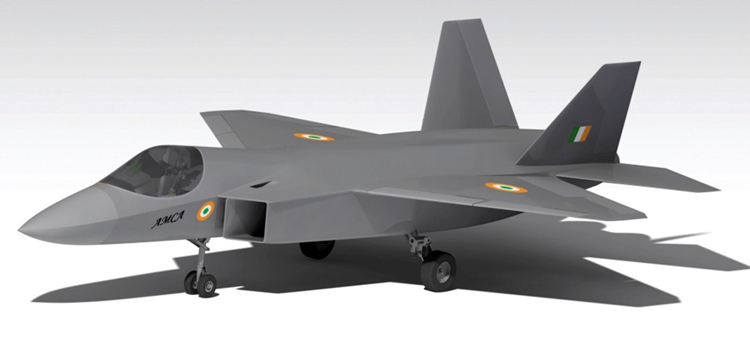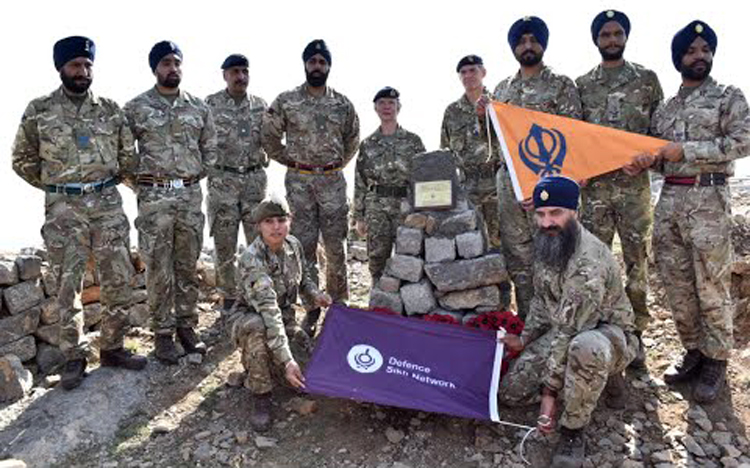INDIAN ARMED FORCES CHIEFS ON
OUR RELENTLESS AND FOCUSED PUBLISHING EFFORTS

SP Guide Publications puts forth a well compiled articulation of issues, pursuits and accomplishments of the Indian Army, over the years

I am confident that SP Guide Publications would continue to inform, inspire and influence.

My compliments to SP Guide Publications for informative and credible reportage on contemporary aerospace issues over the past six decades.
American and British Somersaults
In October 2019, the US backed off from a proposal for collaboration on jet engine technology under the India-US Defence Trade and Technology Initiative (DTTI). Now the US has again offered to collaborate with India for critical jet engine technology.
 |
The Author is Former Director General of Information Systems and A Special Forces Veteran, Indian Army |

The Ukraine Conflict is witnessing flip-flops by the US and the UK in their attitude towards India; in the backdrop of India rebuffing Western demands to reduce trade relations with Russia. It may be recalled that in October 2019, the US backed off from a proposal for collaboration on jet engine technology under the India-US Defence Trade and Technology Initiative (DTTI).
The Joint Working Group (JWG) on jet engine technology under the DTTI framework was thereafter disbanded. Ellen Lord, Co-Chair of the Indo-US DTTI, who also was then US Under Secretary of Defence for Acquisition and Sustainment, announced in New Delhi, “We did run into challenges in terms of US export controls.” She then said the two sides could not come to an understanding of what exportable technologies would be useful to India; this being a lame excuse for American reluctance to share the said technology. It was a stab in the back for India which saw the JWG on Jet Engine Technology as a pathway for the AMCA.
Now the US has again offered to collaborate with India for critical jet engine technology. The proposal by the US firm General Electric (GE) to co-develop the AMCA engine coincides with the development of an ‘Enhanced Performance Engine’(EPE) variant of the GE-F414 for the US Navy. The EPE reportedly offers up to a 20 per cent thrust boost, increasing it to 120 kn. Our Light Combat Aircraft (LCA) Tejas is powered by the GE-F404 engine, which has an 85 kn thrust. India’s Aeronautical Development Agency (ADA)’s plans for the LCA Tejas Mk-2, AMCA Fifth Generation Fighter Aircraft and the Twin Engine Deck-Based Fighter (TEDBF) are also closely woven around the 98 kn thrust GE-F414 engine.
US offer to cooperate with India on jet engine technology which could be used to power India’s Advanced Medium Combat Aircraft (AMCA) came while Prime Minister Narendra Modi was attending the recent G-7 Summit in Germany
The likely reasons for the US offer are: India opted for the French Rafale instead of the US F-35; influence India to reduce defence ties with Russia, and; fear of losing the race to a European defence major like Safran of France. Interestingly the news of revival of US offer to cooperate with India on jet engine technology which could be used to power India’s Advanced Medium Combat Aircraft (AMCA) came while Prime Minister Narendra Modi was attending the recent G-7 Summit in Germany.

During the visit of British Prime Minister Boris Johnson to India in April 2022, the joint statement made special reference to sharing of jet engine advanced core technology. The UK also expressed its willingness for strategic collaboration in developing modern fighter aircraft, making a pitch for British companies to partner with India on projects like the AMCA.
Media quotes unnamed defence sources confirming that US firm GE is being considered along with Safran of France and Rolls-Royce of Britain for collaboration on the AMCA engine. The Defence Research and Development Organisation (DRDO) is the lead agency and a private Indian entity is also likely to be involved in the programme.
Britain has demonstrated over the years it is an American mascot, wagging its tail in unison with Washington. But the question is how reliable are the US and UK, with both sermonizing India despite their own blackest of black records – be it human rights, freedom of speech, religious freedom or whatever. Both countries have been crying hoarse over Russian Special Operations in Ukraine, for which the West forced Russia. Authors like Kelly and Laycock have scripted that America has invaded or fought in 84 of the 193 countries recognised by the United Nations and has been militarily involved with 191 of 193.
The UK expressed its willingness for strategic collaboration in developing modern fighter aircraft, making a pitch for British companies to partner with India on projects like the AMCA
Aside from the above, the major issue is the extremely low credibility of the US given its globally demonstrated actions of making an about turn at the drop of the hat. It is not just the US withdrawing from collaborating with India on jet engine technology under the DTTI in October 2019 and closure of the JWG on Engine Technology, other projects have also similarly suffered. Over the years, the India Rapid Reaction Cell set up by the Pentagon with much fanfare has been downsized. Collaboration on projects like the next-generation mini-UAVs, roll-on roll-off kits for C-130, mobile electric hybrid power source and a protector kit for nuclear, biological chemical fallout did not take off. Significantly, the technology offered by the US for next-generation mini-UAVs was too low and had to be rejected.
Public uttering and demonstrated actions by the POTUS Joe Biden indicates he is suffering from memory loss and perhaps dementia. Despite the bravado shown by US, its frustration is palpable over Russian gains in Ukraine and the failure of Western sanctions affecting Russia much. The current Western push is to expand the European Union and NATO – in the hope that it would scare China and Russia. The needless sermonising to India indicates the US can leave us in the lurch at a time of its choosing. The US-NATO cannot fight Russia and China directly and in the event of a India-China conflict, the US should only be expected to sell us weaponry on its terms.
Boris Johnson, in the traditional British style, appears to be playing a double game with India. Johnson has recently said that India has arbitrarily detained British-Sikh activist Jagtar Singh Johal; who was arrested in 2017 over his alleged role in killings by the Khalistan Liberation Force (KLF) – a banned terrorist organisation. Johnson has also done nothing to extradite Indian economic fugitives like Vijay Mallya, Nirav Modi and others despite an extradition treaty with India but is readily extraditing WikiLeaks founder Julian Assange to the US.
The US-NATO cannot fight Russia and China directly and in the event of a India-China conflict, the US should only be expected to sell us weaponry on its terms
Now a 12-strong British army delegation of Sikh soldiers visited multiple religious sites and historical monuments in Pakistan, including Saragarhi in Khyber Pakhtunkhwa (KPK) on June 28, 2022, under aegis of the Defence Sikhs Network (DSN) of UK. Australia also sent a similar delegation.Pakistan has no love lost for Sikhs, is in league with Sikh separatists, has allowed the Sikhs For Justice (SFJ) to establish an office in Karachi and the ISI has connected the SFJ with Chinese intelligence.

Britain’s links with Pakistan are well known. Both Britain and Canada are home to Sikh separatists and the Baloch Liberation Army (BLA) has warned Canada against mining in Balochistan. How come the British army expedition to Saragarhi after so many decades? Australia is part of the US-led Anglo-Saxon front against Russia over Ukraine, which does not look kindly at India because of its friendship with Russia. We would be naïve to assume these countries want a strong India. Joining the dots would indicate what mischief Johnson is cooking.
Finally, the reliability factor must be paramount for collaboration with the US and the UK in critical technologies in defence as also semiconductors, together with what is their intent now and in the long-term.





